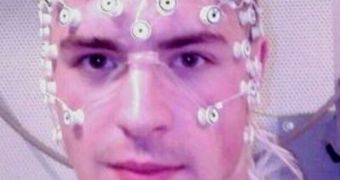According to the conclusions of a new scientific study, it would appear that the human brain is constantly creating maps of its surroundings, which it then uses to navigate the environment. The ability also enables us to form and store memories related to these movements.
But the research also indicates that malfunctions may occur in this mechanism when the brain area responsible for creating the necessary brain waves is damaged, or ceases to function properly, then our brains may start experiencing issues with producing the 3D maps it usually creates.
The team behind the research – made up of experts from the University of California in San Diego (UCSD) – explains that such studies could help them gain more insight into the causes that lead to the development of neurological conditions such as Alzheimer’s disease.
The scientists add that the maps our brains produced are created by special types of neurons called grid cells. They can only create accurate maps when they receive perfectly-timed electrical oscillations (brain waves) from another region of the cortex.
The latter is a neural pacemaker of sorts. Without its contribution, producing the maps becomes impossible, and a number of side-effects can ensue, PsychCentral reports.
“This work is the first to demonstrate that oscillatory activity has a well-defined function in brain areas that store memories,” explains UCSD assistant professor of biology Stefan Leutgeb, who was also the leader of the research team.
Grid cells can be found in the entorhinal cortex, the team explains. “Our findings represent a major milestone in understanding memory processing, and they will guide efforts to restore memory function when cells in the entorhinal cortex are damaged,” Leutgeb adds.
Experts explain that the hippocampus and the nearby entorhinal cortex are the primary areas of the brain involved in memory formation. They play a critical role in the creation and consolidation of new memories from recent experiences.
The team leader adds that the research team also made an interesting discovery during the work – the fact that a neural pathway can operate with a fraction of the signal it's accustomed to, without losing too much of its functionality.
“The implication of this finding is that restoring memory function does not require that we exactly reassemble damaged neural circuitry, rather we can regain function by preserving or restoring key components,” the UCSD scientist explains.
“Our findings are a major step towards identifying these key components in an effort to preserve memory function in aging individuals and in patients with neurodegenerative diseases,” he adds.
Details of the new research were published in the April 29 issue of the top journal Science.

 14 DAY TRIAL //
14 DAY TRIAL //